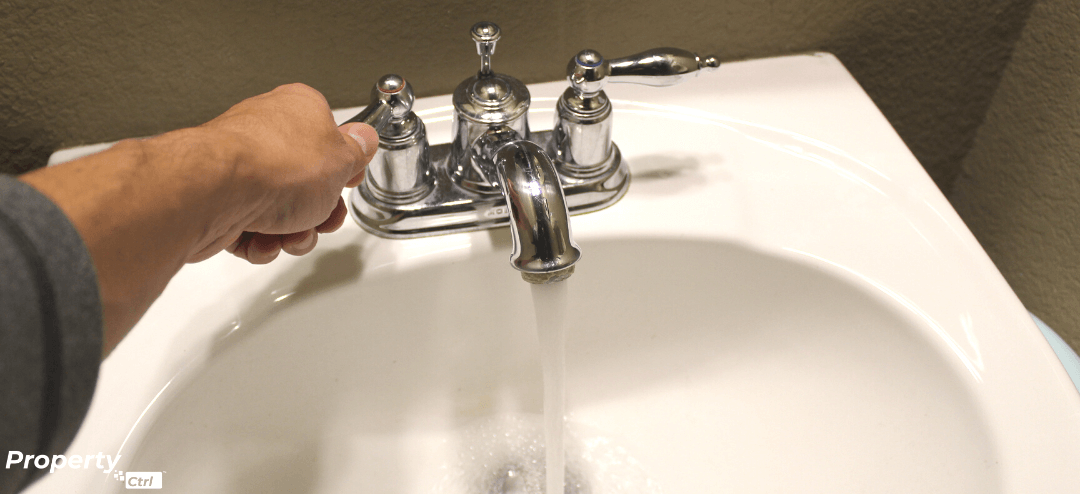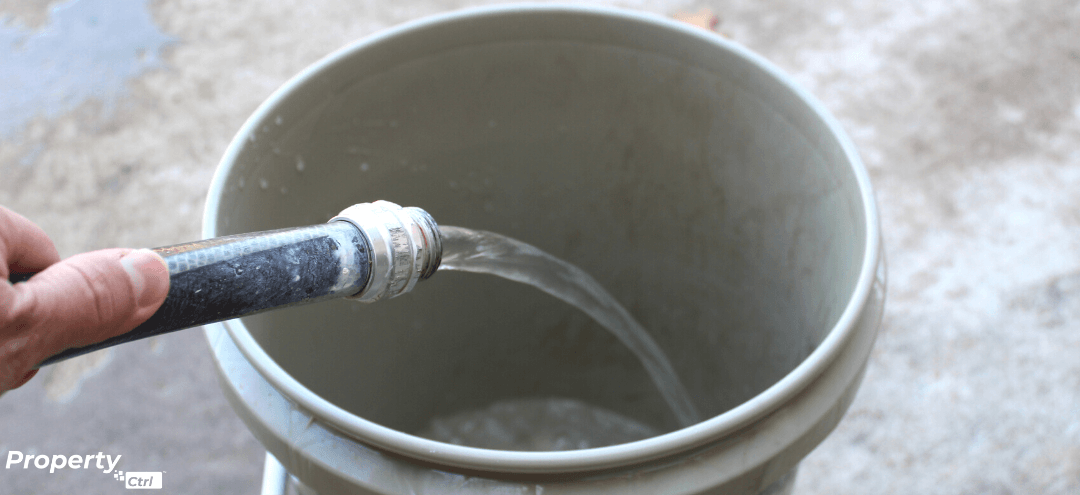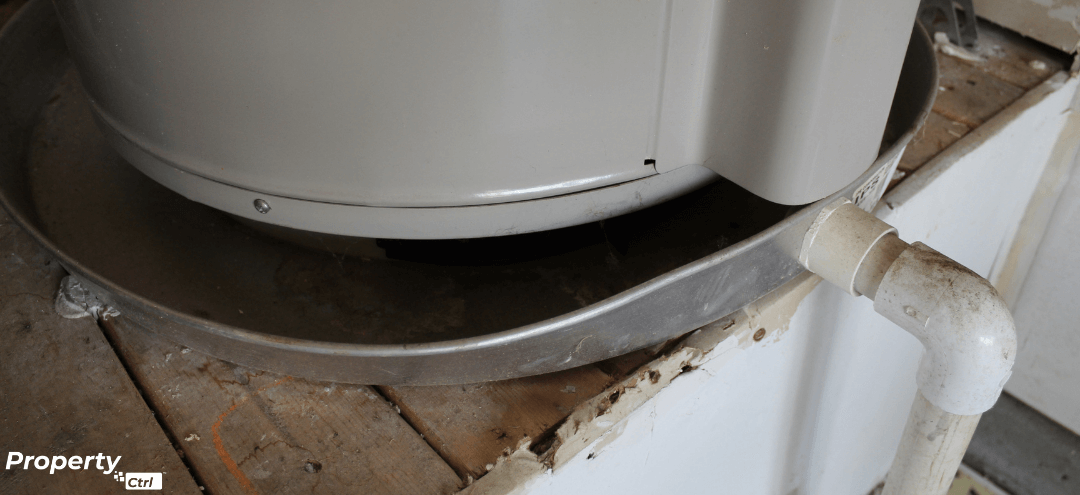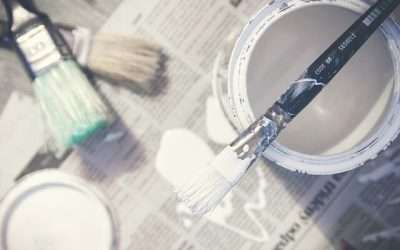How to Flush your Hot Water Heater. Complete Guide.

Learning how to flush a hot water heater can help you extend your water heater’s lifespan and improve its performance.
And better performance, can mean savings on your next electric or gas bill.
Even though water heaters work for years with very little maintenance, they do require regular maintenance in order to work properly and last as long as they should.
So, just a few simple maintenance steps every few months can save you the pain and repair costs from having to replace a hot water heater early.
Or worse, save you from having a ruptured water heater leak all of its water and create damage to your flooring, drywall or foundation.
How Often to Flush Your Water Heater?
Water heater manufacturers recommend flushing your water heater about every six months to a year.
The reason for draining your water heater is that water sediment can build up at the bottom of the unit and this sediment can cause a layer between the water and the heating element from your water heater.
This layer can cause the water heater to not heat up as it should. Making it work harder.
In addition, the sediment at the bottom of the water heater can also create cracks in the interior of the water heater. Reducing the total lifespan of the unit.
That said, if you have had your water heater for 5 years or longer, it is often not recommended that you flush your water heater.
Removing the sediment build up from an old water heater can actually expose already existing cracks inside of the water heater and cause them to expand and leak.
Types of Water Heaters
Before walking you through the steps on how to flush a water heater, it is important to mention that there are many different types of hot water heaters and flushing your water heater can vary by type or model.
For that reason, always check the manufacturers specifications and follow their particular guidelines based on your type of water heater.
There are many types of water heaters but the most common are gas and electric water heaters.
So, how do you know which type of water heater you have?
Simple, walk over to your water heater and take a look. Do you see a gas control valve? Do you see a wide flue at the top going into the ceiling?
If you see this, then you most likely have a gas water heater.
Or do you see thermostat panels and electric supply going into the top of the tank?
If you do then you most likely have an electric water heater.
How to Flush a Water Heater
Flushing your hot water heater is easy. These are the steps to follow:
1. Turn off the power or gas to the unit.

It is important to turn off the power (for an electric water heater) or the gas (for a gas water heater) going to the unit.
For an electric water heater, find your home’s breaker box and turn off the switch linked to your water heater.
For a gas water heater, find the gas valve leading to the water heater and turn it to the off position.
2. Turn off the cold water supply to the water heater.
The next step is to turn off the water supply to your water heater in order to stop water from flowing into the tank once you’re flushing it.
Most often, the water supply valve is located near the water heater. However, you may not have a valve that links directly to the pipe leading to the water heater.
If that is the case, to turn off the water supply, you will just have to turn off the main water supply for the property.
3. Create a flow of water.

It is often recommended to open the hot water from a faucet or sink inside the home before flushing the water heater.
This will help in preventing air from creating a vacuum in the water lines leading to the water heater or into the home.
4. Connect a garden hose to the water heater.

Depending on your model, your water heater will have a faucet or drain valve connection at the bottom of the tank.
Tightly connect a garden hose to the spigot and direct the hose to a water drain or large bucket.
If your water heater is located in the garage, it is an option to direct the hose outside to a grassy area.
5. Begin to flush the water heater.

CAUTION: The water is very hot. Make sure it will not come in contact with you or anyone else.
With the garden hose safely attached, open the spout and the water will start to drain.
If there is sediment at the bottom of the water heater, you will see the water come out dirty. That is completely normal. Let the water drain until the water comes out clear.
Once clear, close the spout and unplug the hose.
Don’t forget to turn the power back on or if you have a gas heater, to relight the pilot and turn it on.
Note that if you have an electric heater, the breaker to the unit may need to be flipped back to the on position.
HOW LONG DO WATER HEATERS LAST?
The life of the water heater will depend on a few different factors.
How much the water heater gets used, how often it is serviced, the quality of the unit from the start and even the water quality at your home.
That said, common, full-tank water heaters last an average of 8 to 12 years.
And with a proper maintenance schedule, they can last even longer than that.
WATER HEATER MAINTENANCE TIPS
These are a few maintenance tips, that if performed regularly, can help you keep your water heater running smoothly and potentially extend its total lifespan.
Check the Water Heater’s Temperature

As may already know, your water heater has a temperature control.
It is a good idea to check the temperature setting and make sure you have the desired temperature selected based on the usage and preference.
Did you know that if your setting is selected for or above 150 degrees, that it would take one and a half seconds to cause a serious burn?
Have kids? Make sure you check this as it’s important for your family’s safety.
The recommended temperature is 120 degrees or less.
Check for Leaks

It is recommended to routinely check for leaks around the water heater and around the water pipes leading up to it.
If you see water built up in the water pan or see an active drip, this can mean trouble is coming.
Make sure the water is not coming from somewhere else, but if the water happens to be leaking out of the hot water heater, at this point it is recommended to call a plumber to have your water heater inspected.
Check the Pressure Relief Valve

The pressure relief valve, as its name suggests, is a small lever valve that releases pressure from the water heater tank if the unit overheats or builds up pressure.
This valve has a small lever and it is usually located at the top or side of the unit.
Check the valve for leaks or signs of damage. If defective, the water heater tank may not be able release the pressure and this build up can eventually break the water heater or create an unsafe situation.
Note that if the water heater is old, checking the valve could mean the valve may not close again and it may need to be replaced.
Make sure to check the valve when you can get a quick replacement at a hardware store if it does happen break.
Professional Water Heater Maintenance
Lastly, if you have a gas water heater, rust can develop and form around the unit’s burner.
It is recommended to have a plumber check and clean the burner since rust can lead to further problems or cause the water heater to start producing carbon monoxide.
Calling a professional is a task that usually gets pushed to the side and saved for another day, but routinely contracting the help of a professional will ensure the water heater is running as it should.
Related Articles
7 Cheap Ways to Increase Your Home Value
Looking to add value to your home without breaking the bank? Check out our affordable DIY home improvement tips for a higher resale value.
How to Unclog a Toilet without a Plunger
A clogged toilet can be quite an annoying situation; specially if you don’t have a plunger. These are common household items you can use to unclog a toilet without a plunger.
How to Find a Stud in the Wall – 7 Simple Ways
In this article we show you how to find a stud in the wall 7 different ways. You’ll be able to hang anything, with or without a stud finder.
This is Property Management by You!
Are you ready to take control? Check out our software features.
About our company
We are a property management software company inspired by the need to serve rental property owners and managers, with a better, easy-to-use and more affordable way of managing their properties.
© 2025 ALL RIGHTS RESERVED BY PROPERTYCTRL.COM





0 Comments